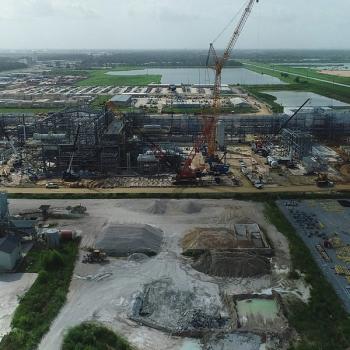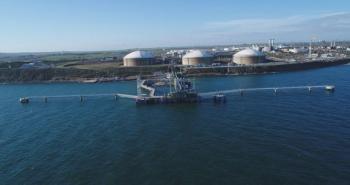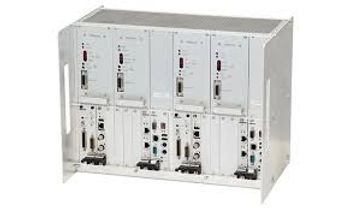
Turbocompressor Surge
MAGNETIC BEARINGS CAN HELP REDUCE THE DESTRUCTIVE EFFECTS
Instability caused by surge, stall or other source, is of significant concern in turbocompressors. The nature of these disturbances should be properly evaluated. Magnetic bearing systems can offer excellent monitoring capabilities to record and analyze loading (forces) and movements of the rotor-assembly in a turbocompressor. This can help in identifying (and monitoring) instability and, in particular, a surge event. Magnetic bearings also can offer corrective forces and movements to the rotor-assembly.
Efforts are being made to use magnetic bearings as a new tool for surge monitoring and possibly surge suppression. These developments could allow magnetic bearings to serve, not only as a monitoring tool for turbocompressor surge, but also as a dynamic actuator to stabilize a surge.
Using active magnetic bearings to control rotor axial and radial clearances (with the help of an accurate turbocompressor model), can reduce the destructive effects of surge and provide a relatively wider operating range for turbocompressors. In simple terms, if the turbocompressor is operating close to the surge-instability region, clearances can be changed (by the magnetic bearing), and the turbocompressor could be moved to another characteristic curve that has a more suitable surge point.
Surge suppression
Changing the axial and radial clearances of the rotating assembly (within identified limits, such as clearance limits to avoid contact and rubbing), can also change the surge behavior of the turbocompressor. In this way, it is theoretically possible (in the case of a short excursion to the surge) that a small rotor movement could be implemented by the magnetic bearing system to stabilize the turbocompressor and avoid surge). The active magnetic thrust-bearing can control the axial position of the shaft up to a certain displacement (say 0.3-0.7 mm). Limits could also be identified for radial clearances.
Magnetic bearings can create stabilizing forces in both radial and axial directions with an appropriate position feedback controller. These corrective actions can be implemented using an accurate model of the turbocompressor, since its aerodynamic behavior can be linked to the exact amount of its clearances.
For instance, it is possible to move the turbocompressor rotor forward and decrease axial clearances, or to move the rotor backward to increase the impeller clearance (particularly for 3D semi-open centrifugal impellers). Impeller clearance can be adjusted both statically and dynamically.
In the case of a 3D semi-open centrifugal impeller, reducing the tip clearance would increase the flow-rate; and increasing this clearance would decrease the flow-rate (with a sensible effect on the surge behavior). The same strategy using different clearance concepts could be used for centrifugal compressors with closed-type impellers, axial compressors and other turbocompressors.
This advanced control option, which relies on accurate system models and clearance control, can suppress surge. A total stabilizing action would not be realistic, though, when a turbocompressor was experiencing a deep destructive surge or was operating far inside the surge zone. However, it is possible to develop a solution for a turbocompressor experiencing a short excursion into the surge zone (for example, in an emergency shutdown).
"Efforts are being made to use magnetic bearings as a tool for surge monitoring and possibly surge suppression."
In particular, this surge suppression option could prove effective for centrifugal compressors with 3D semi-open impellers. There have been successful references for surge suppression systems using magnetic bearings for 3D semi-open centrifugal compressor applications. Experimental results support the potential of tip clearance modulation (axial clearance modification) for control of 3D semi-open impeller surge.
This is a critical application considering a relatively limited operating range (a relatively vast surge zone) for integrally geared centrifugal compressors (mainly using several 3D semi-open impellers). This design can stabilize the turbocompressor to enable safe operation at a marginally unstable region (or an excursion into a surge region).
An advanced proposal could consider this surge suppression option in the compressor rotor and casing details from the compressor initial design stage. The turbocompressor rotating and stationary components can be designed in a way to facilitate some aerodynamic (surge) behavior as a function of different clearances. Theoretically, this technology could be used for axial compressors. However, at this time, it is only a topic for discussion. More studies, simulations and practical works are required for axial compressor applications.
Surge monitoring example
Consider a high-speed centrifugal compressor using radial and axial magnetic bearings. This variable-speed, single-stage, gasbooster compressor uses a 3D semi-open impeller. When the flow was reduced, pressure started to fluctuate. An audible low frequency sound could be heard from the compressor at a low-flow point (say around 60% of the rated flow).
In addition, pressure started to fluctuate with a frequency of about 18 Hz. When the flow was reduced further, pressure frequency started to change to around 6 Hz, and noticeably higher pressure-amplitude fluctuations were observed.
These fluctuations were confirmed by measuring the magnetic bearing system. Three stages were identified:
- Instability initiated and observed by an audible sound change
- Initial fluctuations at a frequency near 18 Hz
- Fluctuations at a lower frequency, near 6 Hz, as flow further reduced.
The above-mentioned dominant frequencies appeared to be relatively constant at different compressor speeds. These frequencies were related to some form of inherent surge frequency within the compressor system.
This was not a stall phenomenon because a stall would typically be related to the compressor speed. The 18 Hz oscillations were probably surge instability in the system known as a mild surge. The 6 Hz oscillations occurred with lower oscillation frequency and larger fluctuation amplitudes. These were probably more of a classic surge. (Note that this kind of monitoring was implemented using magnetic bearings.)
Written by: Amin Almasi, a Chartered Professional Engineer in Australia and U.K. (M.Sc. and B.Sc. in mechanical engineering). He is a senior consultant specializing in rotating equipment, condition monitoring and reliability.
Newsletter
Power your knowledge with the latest in turbine technology, engineering advances, and energy solutions—subscribe to Turbomachinery International today.




